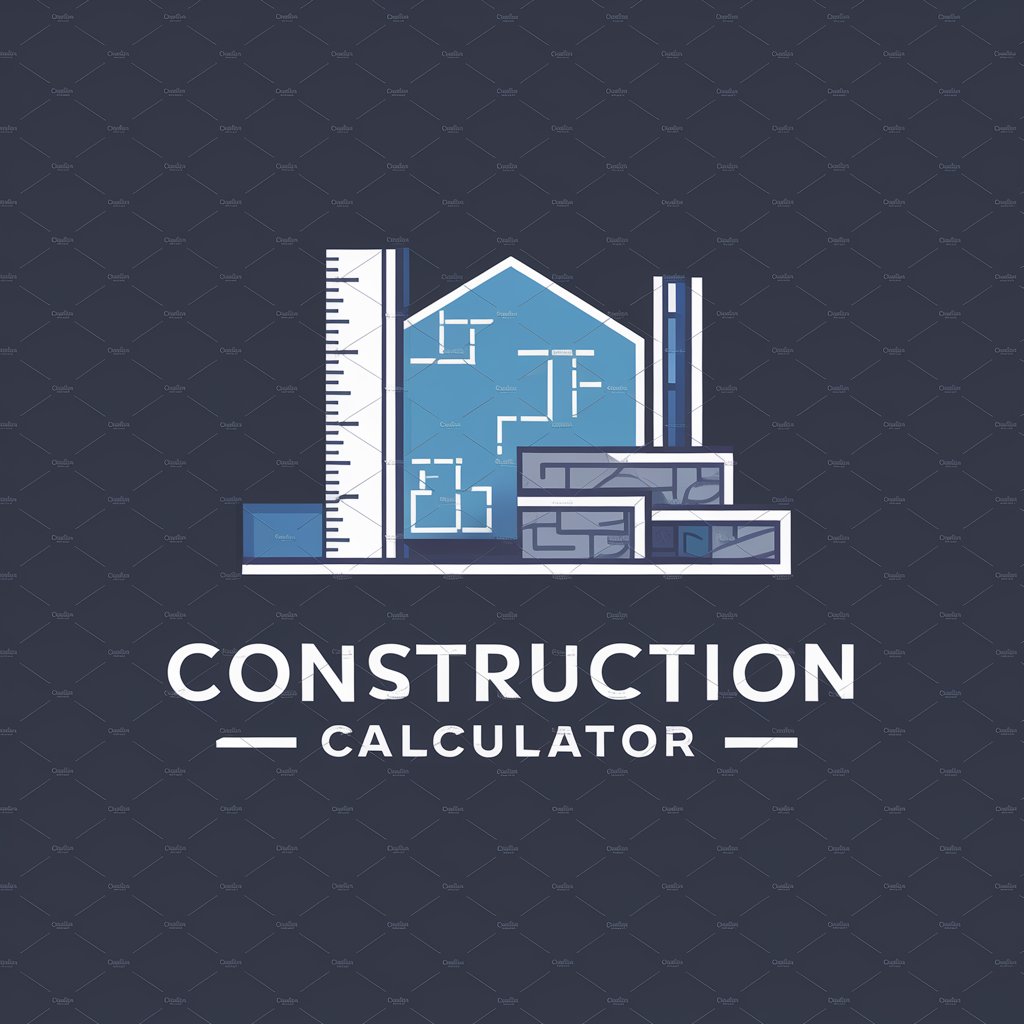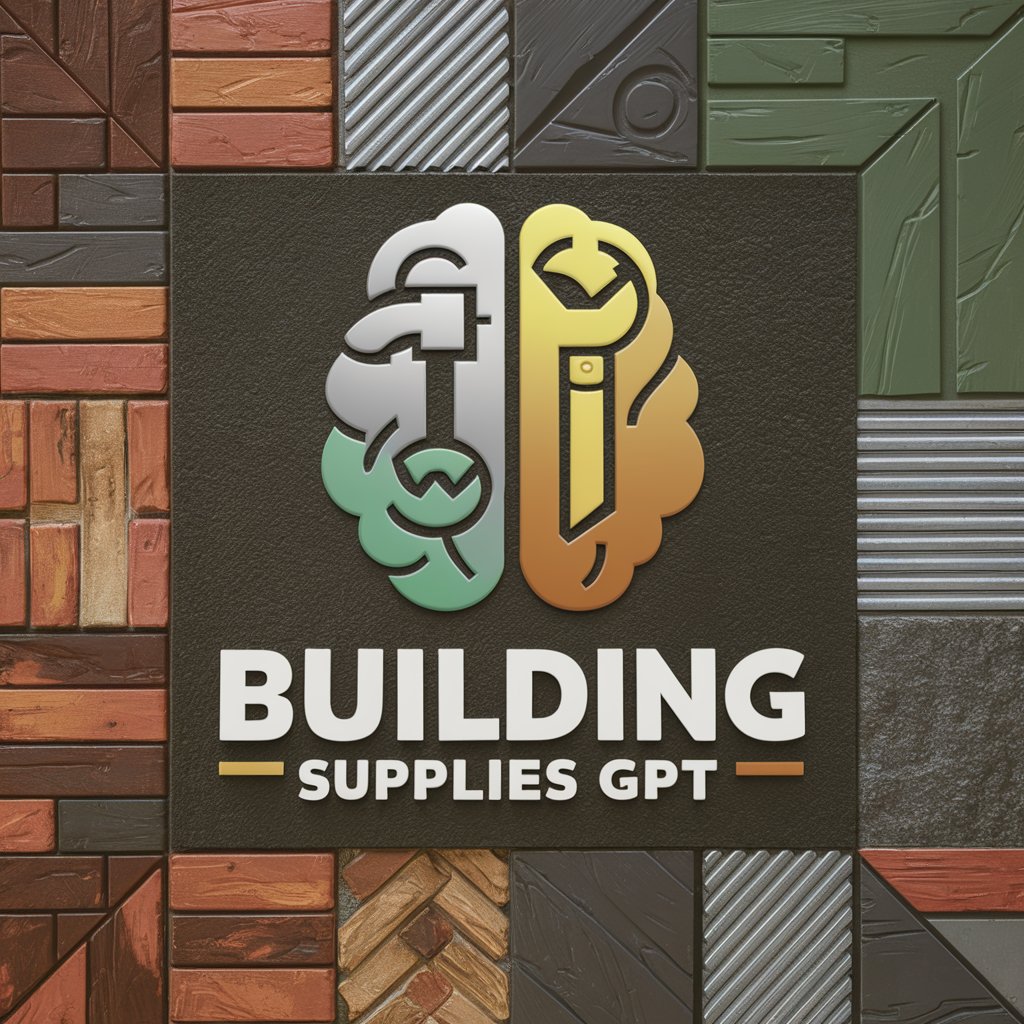
Building Materials - Building Material Insights

Welcome! Let's explore the world of building materials together.
Empowering construction with AI-driven material insights
Explain the advantages of using steel in high-rise building construction.
Compare the properties of different types of concrete for various construction applications.
Discuss the sustainability and environmental impact of using wood in modern construction.
Describe the best practices for mixing and curing concrete for optimal strength and durability.
Get Embed Code
Overview of Building Materials GPT
Building Materials GPT is designed to serve as an in-depth informational resource on the wide spectrum of materials used in construction and architecture. It covers a range of materials from traditional options like wood, steel, and concrete to innovative and sustainable alternatives such as bamboo, recycled plastics, and advanced composites. The purpose of this GPT is to offer detailed insights into the properties, applications, and environmental impacts of various building materials. It aims to assist in selecting the most suitable materials for different construction projects, considering factors like strength, durability, cost, and sustainability. An example scenario could involve a professional architect seeking advice on the best type of wood for a climate-responsive residential project, where the GPT would provide comparisons, benefits, and limitations of options like cedar, teak, and bamboo based on the project's specific needs. Powered by ChatGPT-4o。

Key Functions of Building Materials GPT
Material Selection Guidance
Example
Choosing the right type of concrete for a high-traffic commercial floor.
Scenario
A construction manager is tasked with selecting a concrete mix that offers high durability and minimal maintenance for a shopping mall. The GPT advises on polished concrete with a high-performance finish and additives to enhance strength and longevity, considering the mall's expected foot traffic and aesthetic requirements.
Sustainability Assessment
Example
Evaluating the environmental impact of using recycled steel in building structures.
Scenario
An environmental engineer explores the benefits of using recycled steel for the framework of a new eco-friendly office building. The GPT provides data on the reduced carbon footprint and energy consumption associated with recycled steel, along with sourcing recommendations and potential impact on building performance.
Innovation and Trends
Example
Incorporating self-healing concrete in infrastructure projects.
Scenario
A civil engineer is investigating innovative materials that can increase the longevity and reduce the maintenance costs of public bridges. The GPT explains how self-healing concrete works, its applications, benefits, and the practicality of using it in large-scale infrastructure projects.
Target Users of Building Materials GPT
Construction Professionals
This group includes architects, engineers, and construction managers who are directly involved in planning, designing, and executing construction projects. They benefit from using Building Materials GPT by obtaining detailed material properties, performance data, and sustainability information, which aids in making informed decisions that align with project goals and environmental standards.
Students and Educators
Students studying architecture, civil engineering, or construction management, along with their educators, form another key user group. The GPT serves as an educational tool, offering comprehensive information on various building materials, their applications, and the latest trends in construction materials. This facilitates learning and encourages the exploration of sustainable and innovative building solutions.
DIY Enthusiasts and Homeowners
For individuals undertaking home improvement projects or those interested in sustainable living, the GPT provides accessible information on material options, their benefits and drawbacks, and guidance on selecting materials that meet their needs for durability, cost-effectiveness, and environmental impact.

How to Use Building Materials
1
Start your journey at yeschat.ai for a seamless, no-login-required trial experience, accessing a wealth of building material insights without the need for a ChatGPT Plus subscription.
2
Identify your project requirements, considering factors such as structural integrity, environmental conditions, and budget constraints to select the most suitable building materials.
3
Consult detailed material specifications and standards to ensure compliance with local building codes and performance expectations.
4
Leverage professional tools and software for material analysis and design simulations to optimize material selection and usage.
5
Stay updated with the latest industry trends and technological advancements in building materials to continuously improve project outcomes and sustainability practices.
Try other advanced and practical GPTs
Zebrainstorm.ai
Empowering Web3 Innovations with AI

Startup Executive Summary Writer
Craft Your Startup's Story with AI

SEO Article Writer
Empower Your Writing with AI

Rewrite Article
Revolutionize Your Writing with AI

Cricut Companion
Empowering your crafting journey with AI.

hz's assistant
Powering Your Code with AI

Countertops
Design and Care at Your Fingertips

Couch
Empowering Your Space with AI-Driven Couch Wisdom

Elevate your brand with AI-powered promotional strategies.

Promotional
Tailoring AI for Effective Promotions

Content Profit Transformer
Transform content into digital gold

Consulting Slides Companion
Empower Your Presentations with AI

In-depth Q&A about Building Materials
What are the key factors to consider when selecting building materials for a new construction project?
Consider durability, cost-effectiveness, environmental impact, compatibility with existing structures, and compliance with local building codes. Assess each material's physical properties, such as strength, thermal performance, and resistance to fire, moisture, and pests.
How does the choice of building materials affect a building's sustainability?
Material choice impacts energy efficiency, carbon footprint, and overall environmental sustainability. Sustainable materials are those that are renewable, have low embodied energy, contribute to healthier indoor environments, and can be recycled or reused.
What advancements in building materials have recently emerged?
Recent advancements include self-healing concrete, transparent aluminum, aerogels for insulation, and composite materials that offer superior strength and durability. There's also a growing emphasis on materials sourced from sustainable or recycled content.
Can you explain the importance of building codes in material selection?
Building codes ensure safety, health, and environmental standards are met. They dictate specific requirements for structural integrity, fire resistance, energy efficiency, and more, guiding the selection of materials that comply with these regulations.
What role does technology play in the selection and application of building materials?
Technology enables detailed analysis and simulation to predict material behavior under various conditions, supports sustainable material development, and aids in the design and manufacturing processes for efficiency and precision in material usage.





